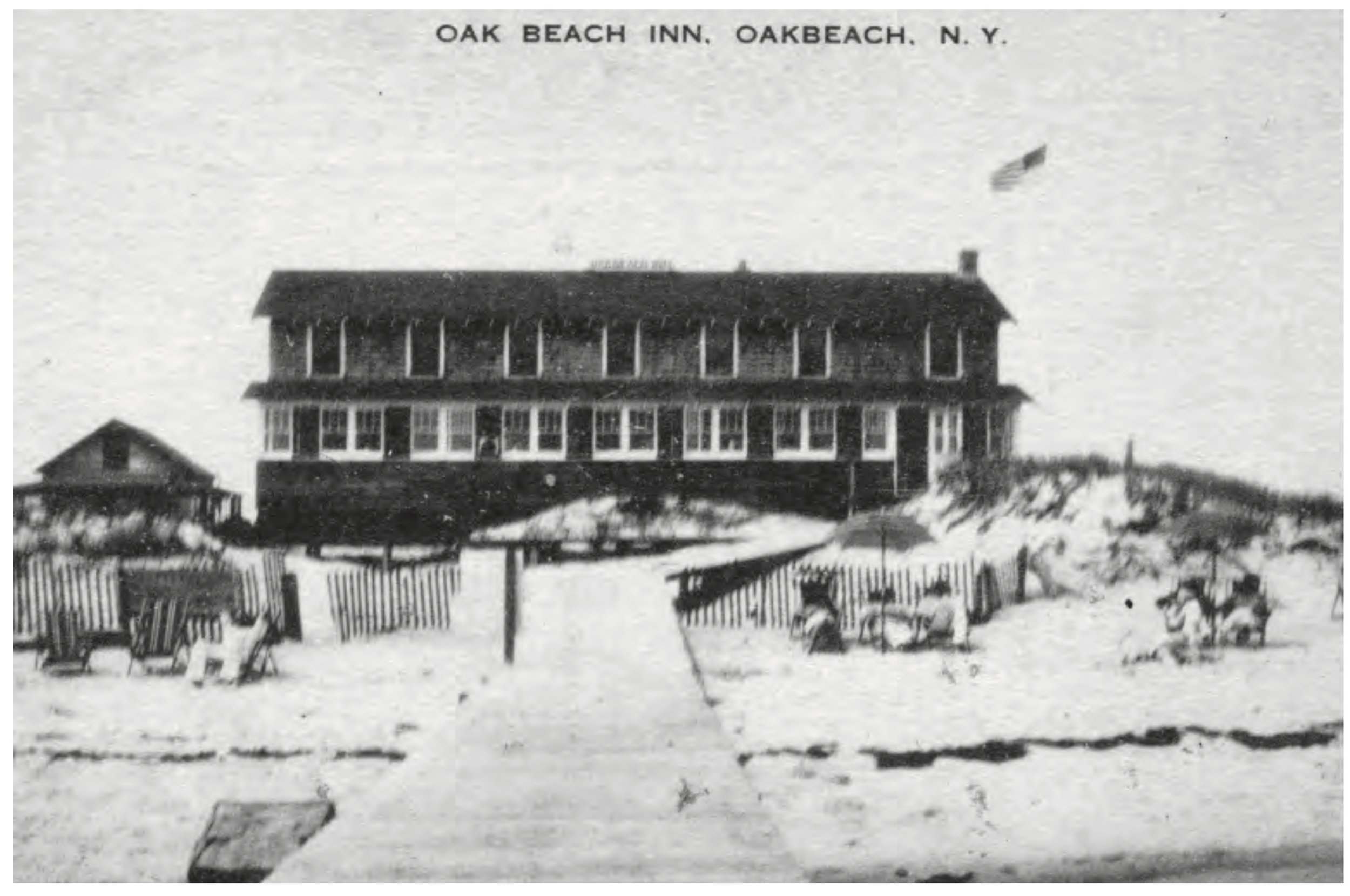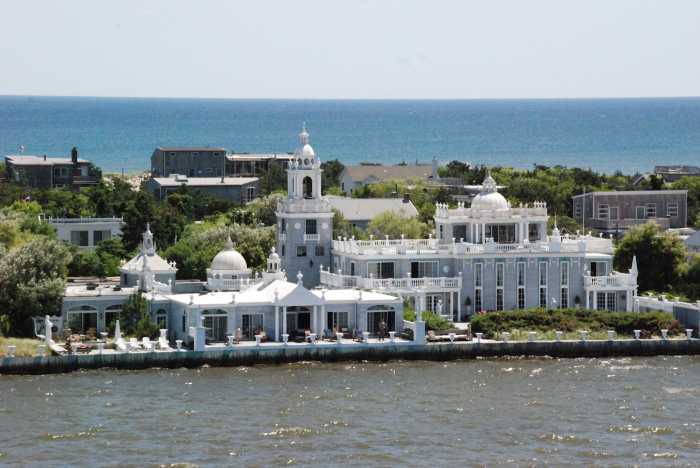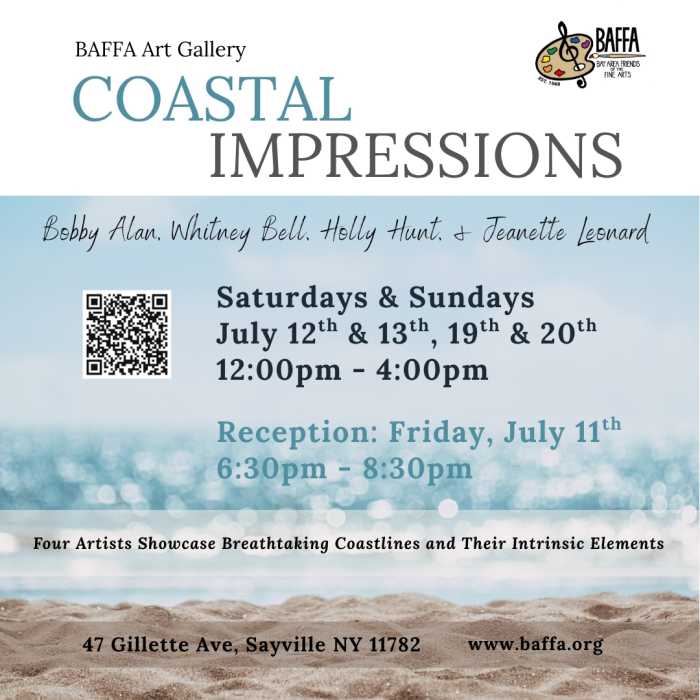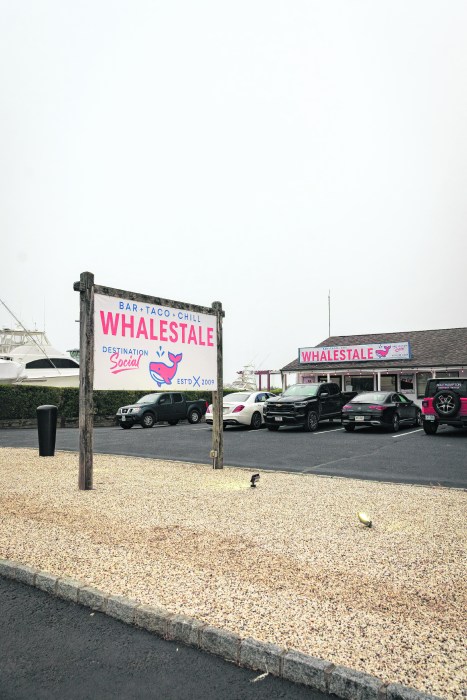Christopher Verga
Headlines in all tabloids near check-out lanes in supermarkets or small rail station kiosks report celluloid stars and the country’s wealthiest people vacationing in quaint resort towns dominated by miles of pristine beaches. The backdrop of these tabloids within decades will disappear without a trace. The culprit who would erase the history and existence of these resort towns would be Robert Moses and his philosophy, “The benefit of a few should not out way the privileges of many.”

Oak Beach Inn, courtesy of Babylon Historical Society.
The exclusive Gilded Age to roaring ’20s Oak Island/Oak Beach, Captree, and the surrounding barrier islands included wealthy industry titans. But the most iconic residents that defined the surrounding barrier islands were the silent silver screen actors and actresses. Alice Brady discovered Oak Beach in 1918, at the peak of her career, during a movie shoot. After filming, Brady would become a seasonal resident and win an Academy Award in 1938 for a role in “In Old Chicago.”
Ernest Shipman, also a seasonal resident of Oak Beach, was a silent movie producer of “Back in God’s Country,” “Sky Pilot,” and “Tarzan of the Apes.” As a resident, he became attached to the picturesque terrain, which motivated him to start a local film company called Sunrise Trial Pictures and assume leadership over Long Island Cinema Corporation. The company’s main studio was Mirror Studios in Glendale, Queens. Sunrise’s first picture was “The River Road,” filmed in 1924. The film used the backdrop of the barrier beaches and the Coast Guard Base in Ditch Plains Montauk to create a story about how a routine coast guard patrol evolved into a romance with a local. Shipman originally intended to shoot the entire film and others within Babylon and the surrounding barrier beaches but lacked the cooperation of the locals and their businesses.
Jones Beach and Wantagh Parkway opened in 1929, connecting the once-inclusive towns along the barrier islands to the mainland. Parks Commissioner Robert Moses received praise for democratizing scenic beaches for anyone with access to a car. But what drew the most attention from the locals in Oak Island, Oak Beach, and Babylon was his tactic that dismantled the residential community of High Hills Beach to make Jones Beach. Years before the opening of Jones Beach, Moses expressed his intent to construct a parkway further east connecting Jones Beach State Park. His first move to connecting the barrier islands for his proposed parkway was the argument over land ownership. When Babylon seceded from Huntington town in 1872, the paperwork deciding ownership of the barrier islands was not filed, making the state’s land property by default. Local Babylon officials added the proposed highway in a compromise as a referendum for locals to vote on or against. Babylon Leader editor James Cooper wrote in a plea to locals:
“Vote NO next Tuesday on the road. We wish to remind you that the town forever loses control of the land. It will give away town rights to fishing, which has been bestowed to us from a patent by Queen Anne and the town trustees.”
Frank Gulden took out full-page ads in the Bay Shore Journal describing the proposed road as “an invasion the voters can block by voting no.” In response, Moses dealt with landowners to buy their property and move their house on one of 344 preserved lots. Leaning on the influx of residents that were state workers, the final vote was 1,063 in support and 988 against. By 1934 the road was completed, and the artist communities of a bygone era became a fading memory.
The only relics of these resort communities and their fight for preservation are a plaque along a bike trail or a four-lane parkway dividing the ocean and bay side of the once legendary Oak Island.




























